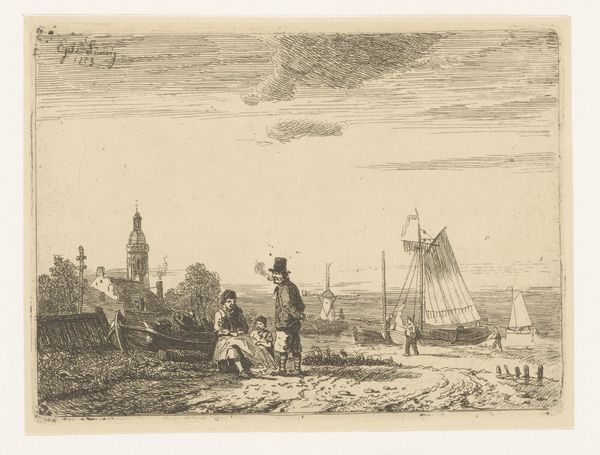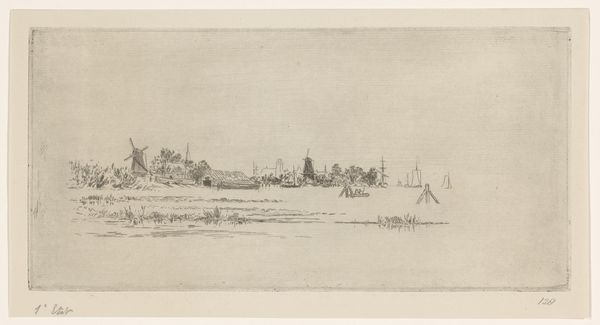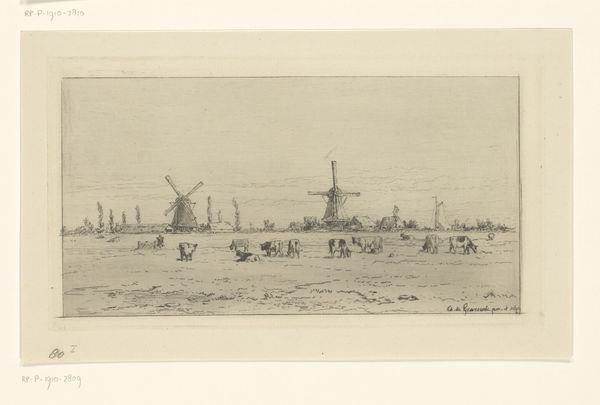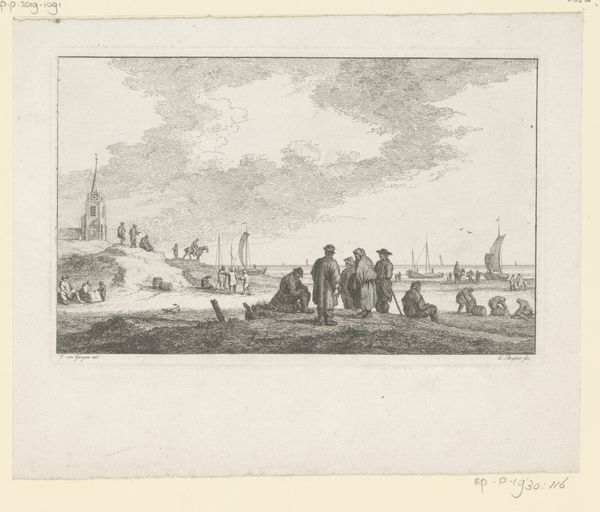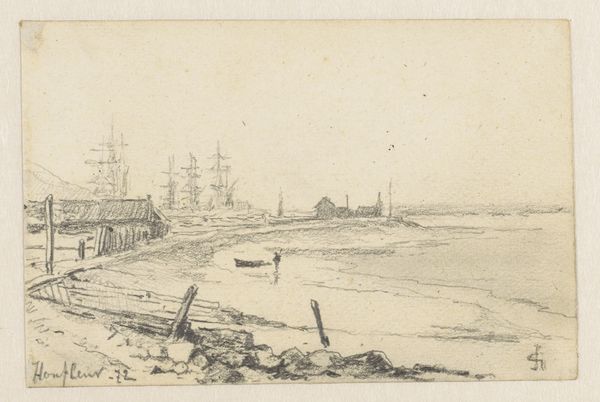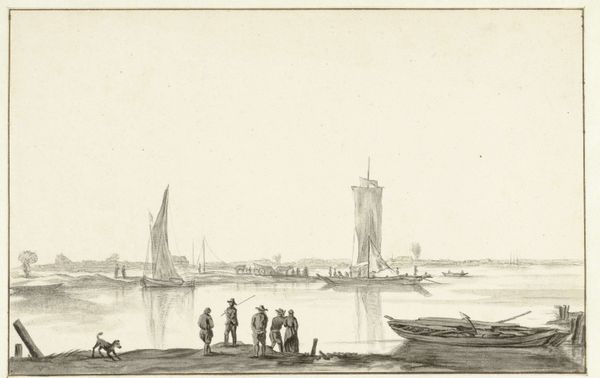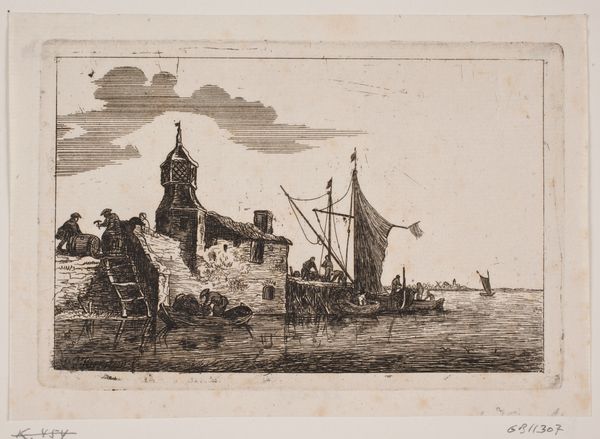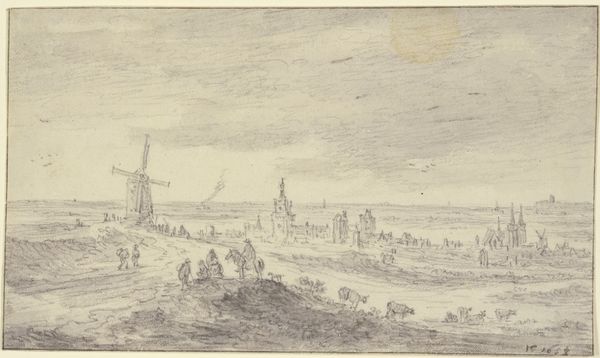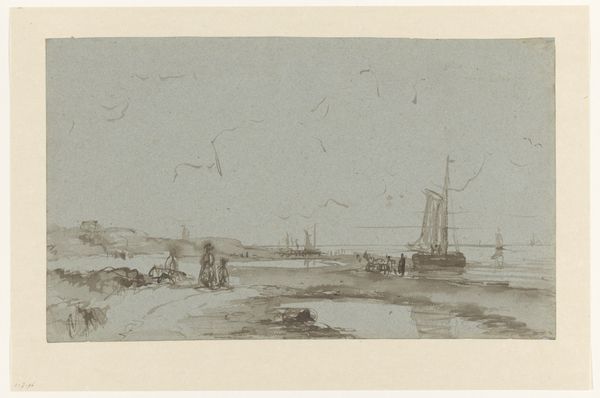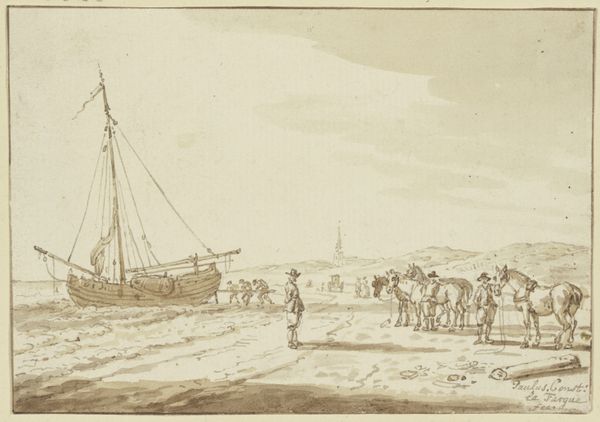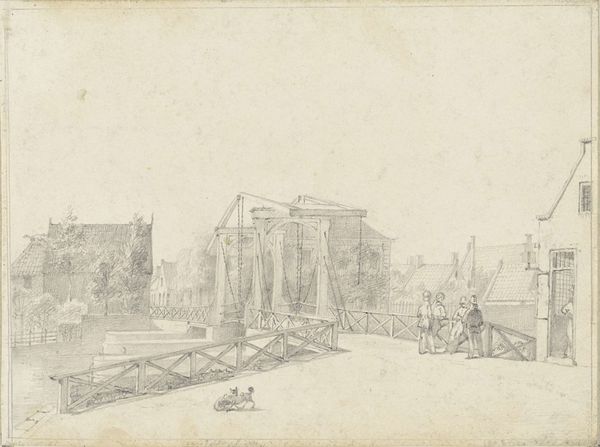
Visser met zijn zoon repareert een net onder toezicht van een pijprokende oude matroos 1853
0:00
0:00
print, etching
#
narrative-art
# print
#
etching
#
landscape
#
etching
#
figuration
#
line
#
genre-painting
#
realism
Dimensions: height 110 mm, width 146 mm
Copyright: Rijks Museum: Open Domain
Editor: We’re looking at “Fisherman with his son repairing a net under the supervision of a pipe-smoking old sailor” by Egidius Linnig, created in 1853. It’s an etching. I'm immediately struck by how much is communicated with so few lines, a snapshot of everyday life. What stands out to you about this print? Curator: Well, the "everydayness" is exactly where its historical power lies. This wasn’t created for a royal court or a religious institution. Genre scenes like this gained popularity as a burgeoning middle class sought art that reflected *their* lives, their values. Notice the details, like the pipe and the meticulously rendered clothing: How do they signal the social dynamics between the figures? Editor: I guess the pipe smoker looks more well-off than the others because of his fancy hat. It’s almost like he’s a supervisor. Does the location, presumably a coastal village, impact its meaning? Curator: Absolutely. Think about the rise of national identities in the 19th century. Images of local trades, specific geographies, contributed to a sense of shared cultural heritage. It fostered a feeling of "Dutch-ness". The etching medium itself is important too. Its reproducibility democratized art, moving it beyond the wealthy elite. Who had access to it versus today? Editor: So, it's less about the individuals and more about what they represent culturally at that time? That changes how I see it! And of course, who the art was aimed at says so much. I didn’t consider the socio-political forces at play back then! Curator: Precisely. Considering the social and cultural role of images offers a more complete picture. That's something I find myself focusing on when looking at artwork.
Comments
No comments
Be the first to comment and join the conversation on the ultimate creative platform.
